AI technologies like Chat BI, AI Analytics, and Chat with Data in the manufacturing domain has been transformative, enhancing operational efficiency, predictive maintenance, quality control, supply chain management, and decision-making processes.
"The introduction of AI into manufacturing is not just an evolution; it's a revolution. AI is enabling us to rethink how we integrate information, analyze data, and use the resulting insights to improve decision making—and already, it's transforming every aspect of operations." -- Ginni Rometty, former CEO of IBM
How are manufacturers improving operations, reducing costs, and enhancing product quality? 🔅
Operational Efficiency and Process Optimization:
-
Real-time Monitoring and Analytics: AI-driven analytics tools process data from various sensors and machines on the production floor in real time. This data helps in identifying bottlenecks, optimizing machine performance, and reducing downtime.
-
Chatbots for Operational Queries: Chatbots interfaced with BI tools can provide instant answers to operational queries such as production volumes, machine status, or inventory levels, enabling quick decision-making.
Predictive Maintenance:
-
Machine Learning Models: AI analytics are used to predict equipment failures before they happen by analyzing historical data and identifying patterns indicative of potential breakdowns. This helps in scheduling maintenance activities proactively, reducing unplanned downtime.
-
Natural Language Processing (NLP) for Maintenance Logs: NLP technologies can analyze maintenance logs and operator notes to identify common issues and suggest preventative measures.
Quality Control:
-
AI-driven Inspection Systems: Visual inspection systems powered by AI can detect defects or quality issues more accurately and consistently than human inspectors. These systems can analyze images or videos of products on the production line in real-time.
-
Data Analytics for Quality Improvement: AI analytics can process vast amounts of quality-related data to identify root causes of quality issues, enabling manufacturers to make informed adjustments to processes or materials.
"AI is at the heart of the digital transformation that is sweeping across every industry. In manufacturing, it’s leading to greater efficiency, higher quality products, and new levels of innovation. It’s not just about automation; it’s about augmenting human capabilities and enabling people to achieve more." -- Satya Nadella, CEO of Microsoft
Supply Chain Management:
-
Predictive Analytics for Demand Forecasting: AI algorithms can analyze market trends, historical sales data, and other external factors to accurately forecast demand, helping manufacturers adjust production schedules and inventory levels accordingly.
-
Chatbots for Supplier Communication: AI-powered chatbots can automate routine communications with suppliers, such as placing orders or querying delivery statuses, streamlining supply chain operations.
Safety and Compliance:
-
Monitoring and Alerts: AI systems can monitor compliance with safety protocols and regulations. For instance, computer vision can ensure that workers are wearing the proper safety equipment and following safety procedures.
-
Compliance Data Management: AI-driven systems can manage and analyze data related to compliance, automatically generating reports and alerts if there are deviations from regulatory requirements.
Peek into possibilities? No Clicking...Only Chatting! 🗣️
What can Chat BI do for you?
-
Answer in under 30 seconds.
-
Create dashboards to finding explanations for data anomalies, to forecasting.
-
It figures out and performs all the necessary analytical steps to deliver any requested insight without your involvement.
-
Lets you describe in plain English, even by using vague or relative terms.
-
Generates SQL, DAX, and MDX queries and Python and R machine-learning logic.
-
Find and fix errors in your code or generate new SQL/Python code from scratch.
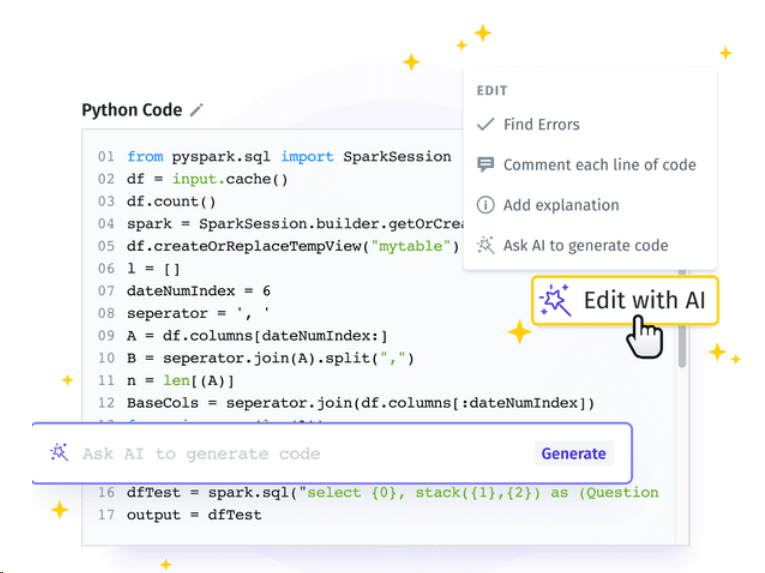


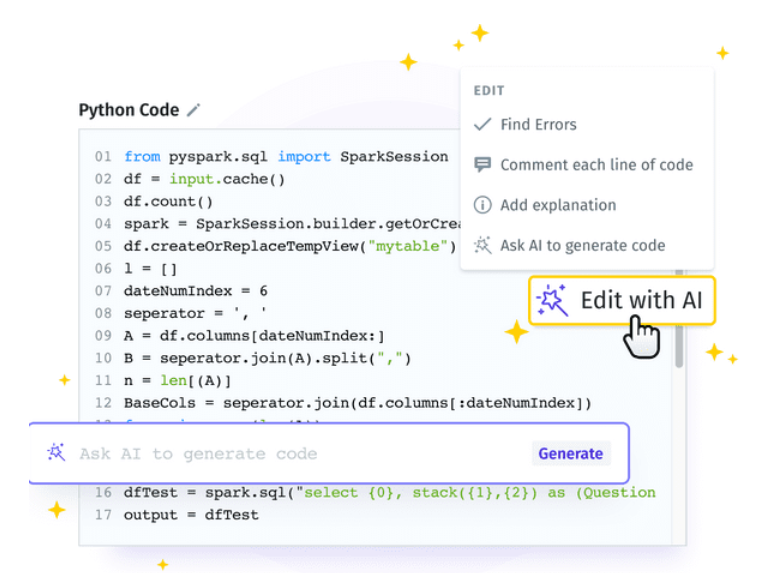
Credits: Tellius
-
Be your co-pilot that automatically validates and optimizes your code, adds inline comments and generates explanations of code.
-
Unlocks self-service analytics, provides natural language search.
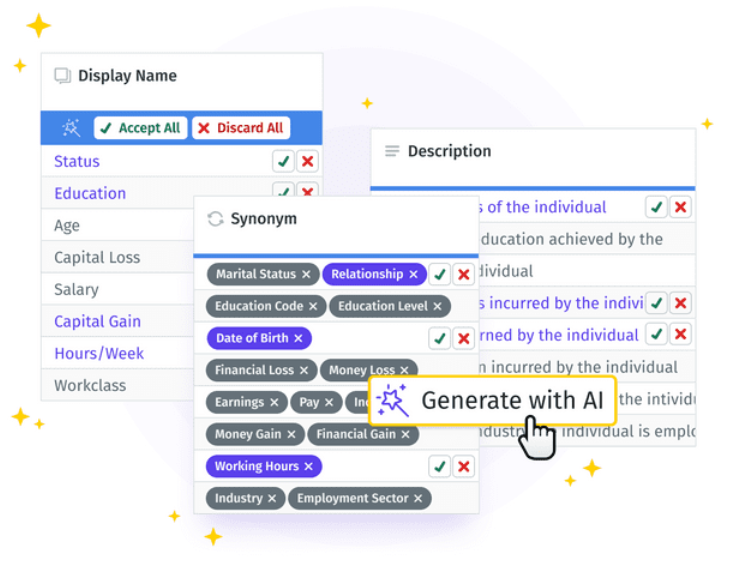
Credits: Tellius
-
Summarizes charts and presents takeaways as nuggets of information that are customizabnle in tone and length.
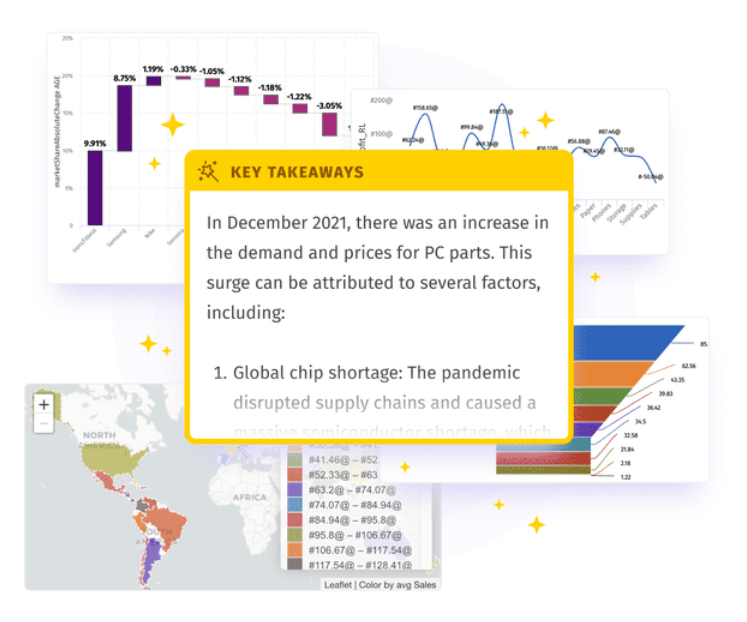
-
For “why” questions, AI-powered insights automatically tests millions of combinations to surface hidden key drivers, trends and segments.
-
To answer “how” questions, ML modeling capabilities augment manual processes.
-
Dives into the data model to deliver holistic insights, understand anomalies, provide descriptive and diagnostic analysis, display data drivers, and clearly describe the reasons for underlying differences between any two data points.
-
Leverages heuristics to determine model relationships so that you can forego complex data transformation or data cleansing.
-
Fills in the Blank, fills nulls and bridges gaps for time series and trend analysis in any dataset to drive accurate forecasting.
-
Using natural language, lets you alter visualizations, drill, dice, swap, filter, and sort data using prompts derived from key elements in the data model.
Success Stories 🔮
"We are moving from a mobile-first to an AI-first world. In the manufacturing sector, AI can analyze vast datasets to predict trends, improve supply chains, and create more responsive and flexible production lines. This is a game-changer for the industry." -- Sundar Pichai, CEO of Google
Siemens and Predictive Maintenance
Siemens implemented AI analytics for predictive maintenance in their gas turbine factories. By analyzing sensor data from turbines in real-time, Siemens was able to predict equipment failures and schedule maintenance more effectively.
Results:
-
Reduction in Downtime: Predictive maintenance led to a significant reduction in unplanned downtime, by as much as 30%.
-
Cost Savings: The approach saved millions in operational costs by avoiding unexpected equipment failures and optimizing maintenance schedules.
General Electric (GE) and Digital Twins
GE developed digital twins for its manufacturing equipment, using AI and data analytics to create virtual replicas of physical machines. These digital twins simulate the equipment’s performance under various conditions, aiding in optimization and predictive maintenance.
Results:
-
Improved Efficiency: GE reported a 10-20% improvement in asset performance management.
-
Enhanced Predictive Maintenance: The use of digital twins has enabled GE to anticipate failures and schedule maintenance, reducing downtime and maintenance costs.
"The competition for the future of manufacturing will be through AI and innovation. It's about who can innovate faster, reduce costs, and improve quality through intelligent systems. Our success at Tesla is largely due to our aggressive adoption of AI to improve manufacturing processes." -- Elon Musk, CEO of Tesla and SpaceX
Toyota and Quality Control
Toyota integrated AI-driven visual inspection systems to enhance quality control in their manufacturing process. These systems utilized computer vision to detect defects or irregularities in vehicle parts at various production stages.
Results:
-
Increased Quality Accuracy: The AI system improved defect detection accuracy by over 90%, significantly reducing the rate of defects.
-
Cost Reduction: By catching defects early in the production process, Toyota saved on the costs associated with reworks and recalls.
Intel and Supply Chain Optimization
Intel applied predictive analytics and AI to optimize its supply chain. By analyzing data on supplier performance, market demand, and logistics, Intel was able to forecast demand more accurately and optimize inventory levels.
Results:
-
Reduced Inventory Costs: Intel achieved a 25% reduction in inventory costs through better demand forecasting and inventory optimization.
-
Improved Supplier Performance: AI-enabled analytics helped Intel improve supplier delivery times by identifying and addressing supply chain bottlenecks.
Bosch and Safety Compliance
Bosch used AI and computer vision to monitor compliance with safety protocols in their factories. The system analyzed video feeds in real-time to ensure that workers adhered to safety measures.
Results:
-
Enhanced Safety: The implementation of this AI system led to a noticeable improvement in compliance with safety protocols.
-
Reduction in Accidents: Bosch reported a decrease in workplace accidents, contributing to a safer working environment and reducing associated costs.
Who are the leading Analytics Providers? 📊
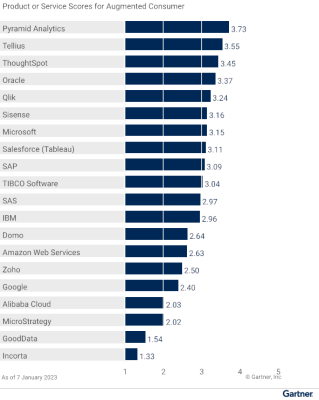
Analytics and Business Intelligence Platform Providers
Benefits 🪴
-
Lowers barrier for personnel to get the information they need using co-pilots.
-
Enhanced predictive maintenance of equipment.
-
Improved quality control through AI-driven inspection systems.
-
Optimized supply chain management with predictive analytics.
-
Greater operational efficiency via real-time monitoring and analytics.
-
Accelerated decision-making processes, leading to significant cost reductions and increased productivity.
Conclusion 🥅
The integration of AI technologies like Chat BI, AI analytics, and natural language interaction with data is ushering in a new era of digital transformation for the manufacturing industry.
As evidenced by success stories from leading companies like Siemens, GE, Toyota, Intel, and Bosch, AI-powered solutions are delivering tangible benefits in areas such as predictive maintenance, quality control, supply chain optimization, and operational efficiency.
However, the true potential of AI in manufacturing lies not just in automation, but in augmenting human capabilities and enabling personnel at all levels to achieve more through data-driven insights and decision-making.
As AI continues to advance, manufacturers that embrace these technologies will gain a significant competitive advantage, driving innovation, reducing costs, and delivering higher quality products to market faster. The future of manufacturing is intelligent, connected, and driven by the synergy of human expertise and artificial intelligence.
What questions do you have about artificial intelligence in Life sciences? No question is too big or too small. Submit your questions about AI via this survey here.
COMMENTS